Showing Pride
Late last fall, my daughter and her friend joined me at a UNM Alumni event at Hodgin Hall...
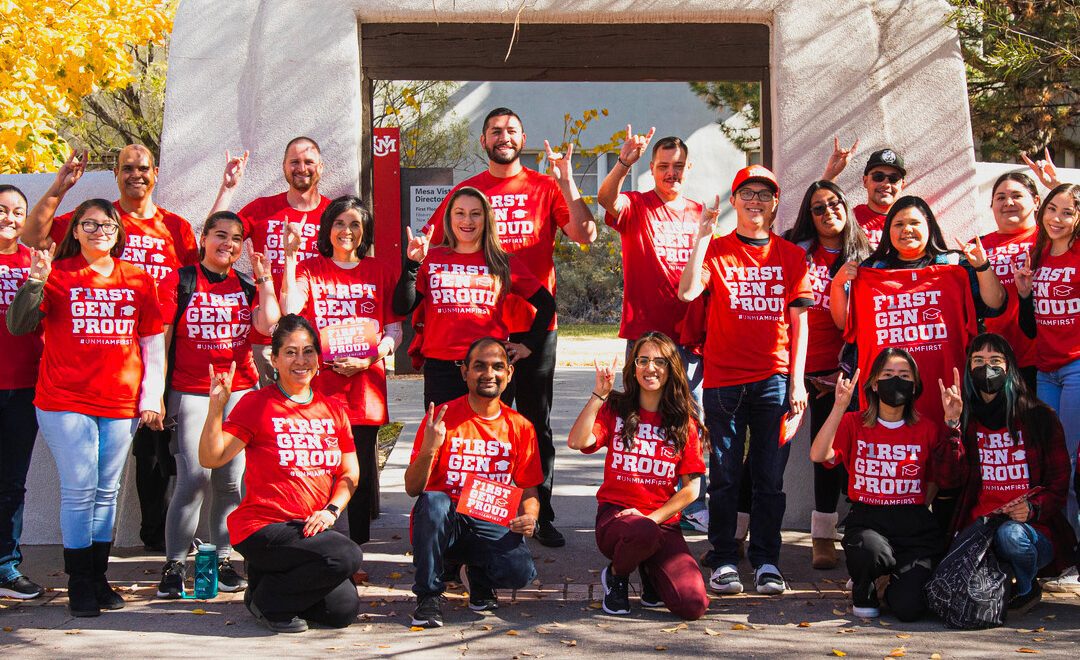

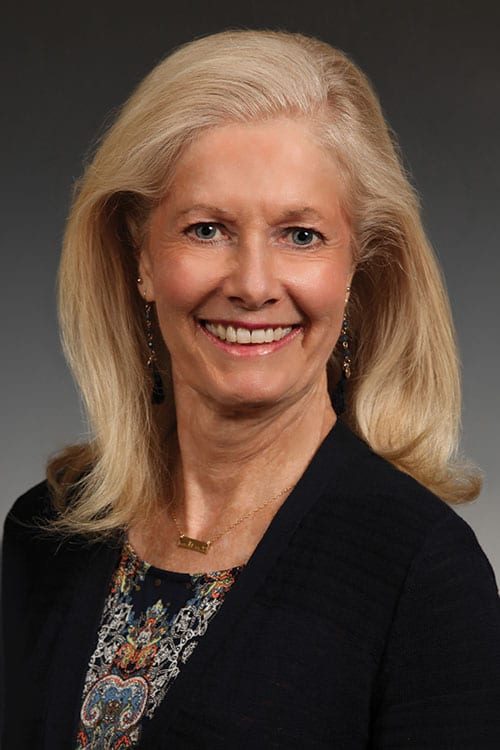
As we near high school graduation season, we come across a lot of soon-to-be high school graduates speaking about the colleges and universities all over the U.S. that they’re interested in attending in the fall. Much to our happiness, we hear them speaking about UNM and what draws them in to our University. It’s always a great moment to share the many benefits that come with attending UNM as a New Mexican high school graduate — such as having to pay very little, to none, for their tuition; the diverse programs we offer for all students, and the vibrant environment we evoke on our campus.
Through my travels I have gotten to experience and talk about the amazing things that make our University so special and a wonderful memory in people’s minds. At UNM, we offer the tools and resources for students from all walks of life to thrive on our campus and in our classes. We have scholarships like the Opportunity Scholarship that covers the tuition of all New Mexican high school students who go straight into an New Mexico college. UNM has structurally grown more in the past 10 years than it has since its conception in 1889, with the expansion of our hospital, creating more focused and specialized areas. In addition, we have an upcoming multimillion-dollar center for the collaborative arts, as UNM prepares to build a new Fine Arts building. Getting to share this information with potential new Lobos and show them what we offer, is such an incredible experience.
As Alumni we have ownership over this University, and as the owners we get to support and maintain the value of the degrees we earned here. It’s the Lobo Pack that unites us, our traditions and heritage and keeps us connected all over the world.
Connie Beimer (’76 BA, ’79 MPA)
Vice President for Alumni Relations, UNM
Executive Director, UNM Alumni Association
Late last fall, my daughter and her friend joined me at a UNM Alumni event at Hodgin Hall...
Diné filmaker Shaandiin Tome turns her lens to native people…
Read MoreUNM Alum expands on her father’s literary legacy…
Read MoreUNM’s second-largest college is poised to move onto Central Avenue…
Read MoreTriple alumna followed her dream from Vietnam to a doctor of nursing…
Read MoreNASA’s newly employed James Webb Space Telescope is reaching ever deeper…
Read MoreWhen I was in high school, my family relocated to Rio Rancho…
Read More
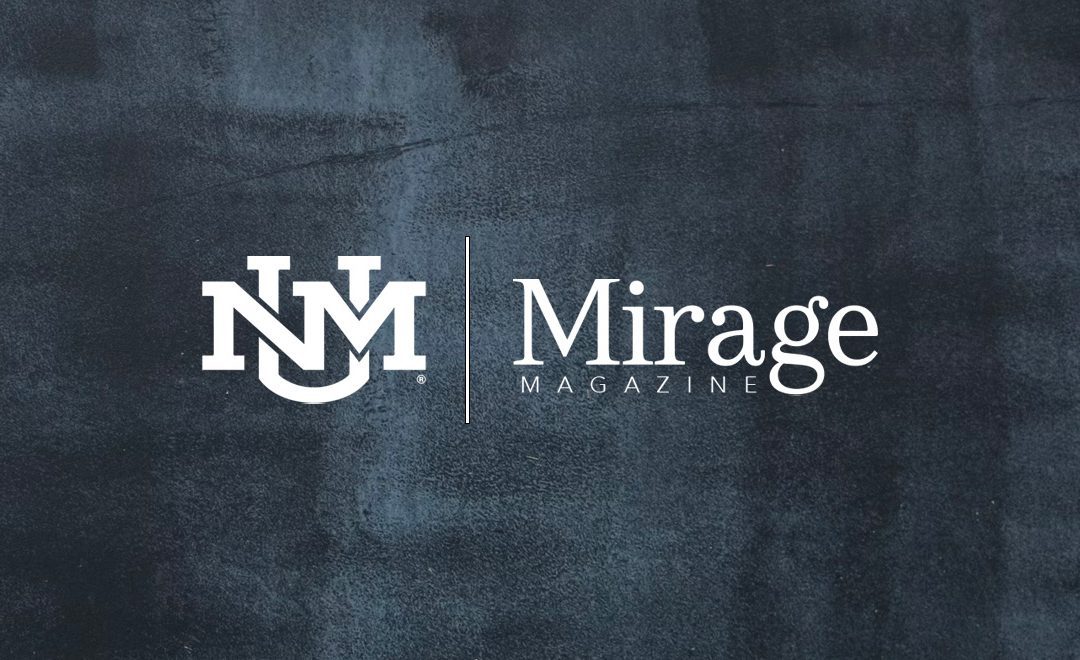
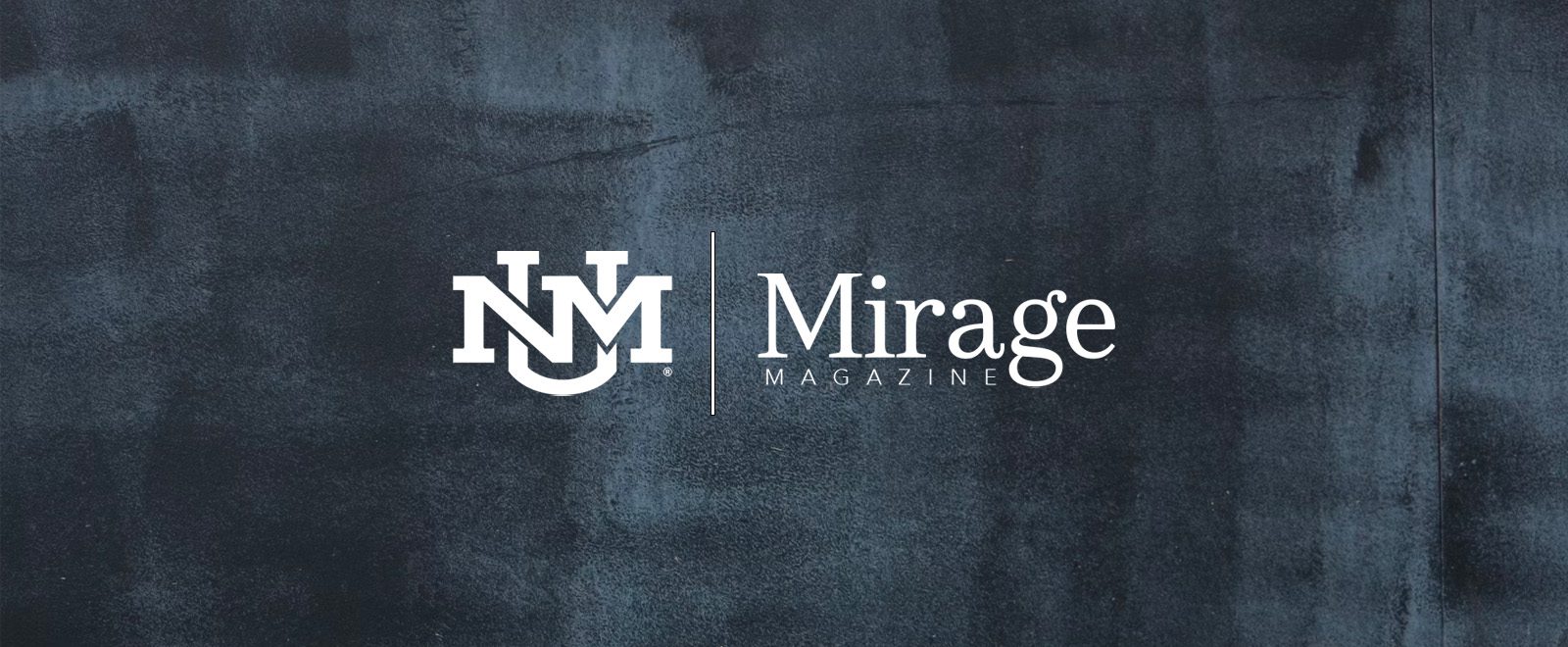
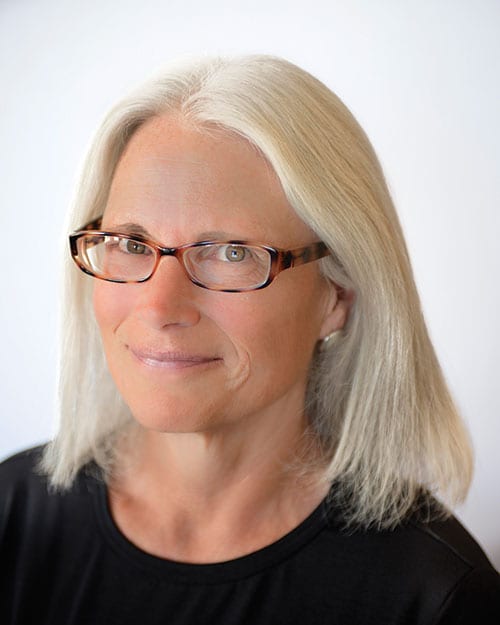
Do you remember sitting in algebra class in high school or college fiddling with your pencil and asking yourself, “When will I ever use this in the real world?”
Some of us had those thoughts when we went into journalism, hoping the only math we would ever have to use as an adult would be how to split a bar tab with friends.
I’m embarrassed to say that math has come back to haunt this ink-stained wretch.
In the Fall 2022 issue of Mirage, we featured a true genius — computer scientist Jack Dongarra who received his PhD in applied mathematics from UNM in 1980 and went on to win the Turing Award, a $1 million prize considered the Nobel of computer science.
His specialty is linear algebra.
We thought a blackboard scattered with math problems would be a nice background for the story layout and we chose one from a graphic design source.
By my math, a beautiful layout + wonderful alum = magazine success.
Then the letters started coming in.
Dear editor:
Jack Dongarra might be “pretty good at math” but the equations in the background on pages 16-19 contain errors! The cube root of negative 8 is *negative* two; also in a few places the digit “2” is meant to be a superscript meaning something squared, but isn’t printed that way. But a good article!
Mike Collins
Ph.D., computer science, 2005
Dear editor:
I thoroughly enjoy reading each issue of Mirage Magazine, but believe an error was made in the Fall 2022 Edition. The “Pretty Good at Math” story about Jack Dongarra has a formula stating the cube root of -8 equals “2”. I believe it should say it is equal to “-2”.
Take care,
Thomas Malench
’85 BS, Pure Mathematics
Another alum suggested that our use of incorrect math was disrespectful to the story subject.
I hope that isn’t the case, and if it is I’m profoundly sorry. I thank the keen readers and smart alumni who caught the error.
We’ve erased the blackboard and started again. I hope you enjoy this algebra-free issue of Mirage.
Leslie Linthicum
MirageEditor@unm.edu
Late last fall, my daughter and her friend joined me at a UNM Alumni event at Hodgin Hall...


Cannabis growers, physicians and scientists will be guest speakers in a rebooted class in the Communication & Journalism Department. The popular “Cannabis and Communications” will be revamped this spring to reflect New Mexico legalizing recreational cannabis sales in addition to medicinal marijuana sales. Health and the environment will be a focal point and students will conduct their own social scientific research and analyze how cannabis is portrayed in news media and film as well as social media.
It is another three years for Garnett S. Stokes at the helm of The University...
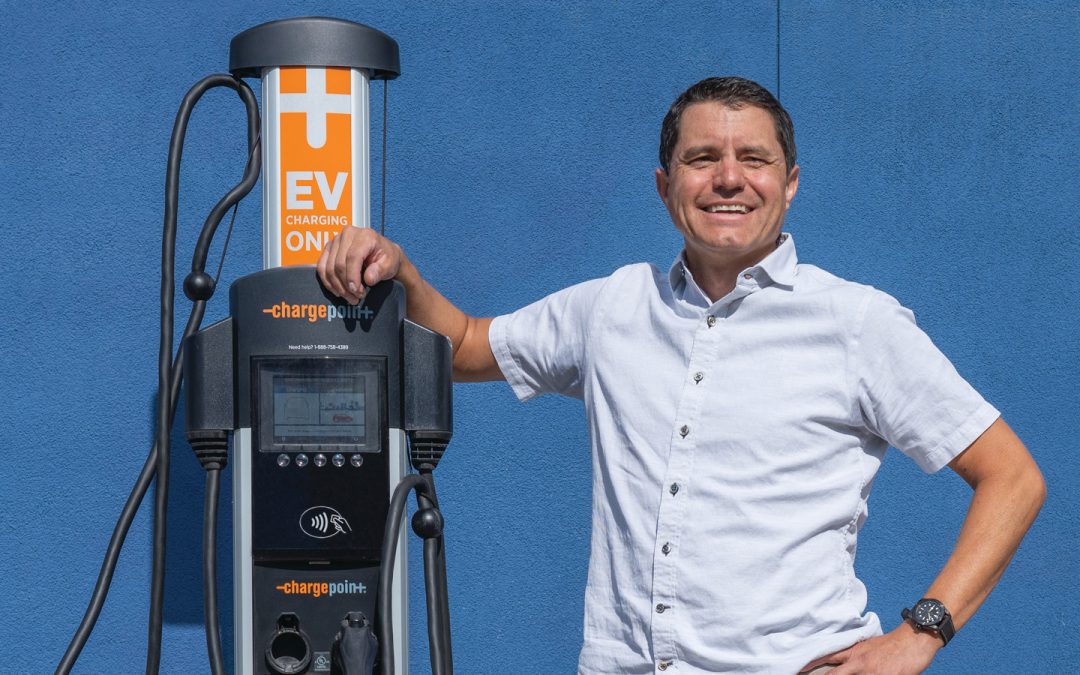

Photos:
Roberto E. Rosales (’96 BFA, ’14 MA)
UNM grad helps spark electric vehicle revolution
By Leslie Linthicum
When Doug Campbell was a skater punk in Albuquerque in the 1980s, The University of New Mexico campus was his skate park. Unfocused in school and happy to buck authority, he rode the ramps and sidewalks of campus, one step ahead of the university police.
Campbell went on to earn two degrees from UNM, a bachelor’s in civil engineering in 2001 and master’s a year later, and took several classes from Gerald May, who happened to have been the president of UNM when Campbell was getting chased off campus by UNM police.
Well, no hard feelings on either side.
Campbell had finished his bachelor’s and was unenthused about the traditional career paths for a civil engineer. As Campbell’s undergraduate advisor, May saw a saw a young man struggling to figure out his future.
“He was one of those students who was driven, exceptionally bright. He was focused,” May says. “And he was restless, in the sense of wanting to do more.”
“Doug,” May told him, “you’re destined for great things, but if you can’t decide what you want to be, go to graduate school and you’ll better see your path.”
“And,” May says today, “he did.”
In graduate school, Campbell found his passion in aerospace and in solving complex problems.
Today, he is an entrepreneur who sold an aerospace startup two years ago and is CEO of a next-generation battery company that has deals with Ford and BMW.
Blessed by his success, Campbell just donated $5 million to the School of Engineering, earmarked for the Department of Civil, Construction and Environmental Engineering. The gift is without restrictions except for one: The department will be named for May.
When he made the gift and specified the department be named for May, Campbell wanted to honor a man who helped change his life.
“He is such a phenomenal individual,” Campbell says. “He was such a humble and phenomenal teacher. I just developed an immense amount of respect for him.”
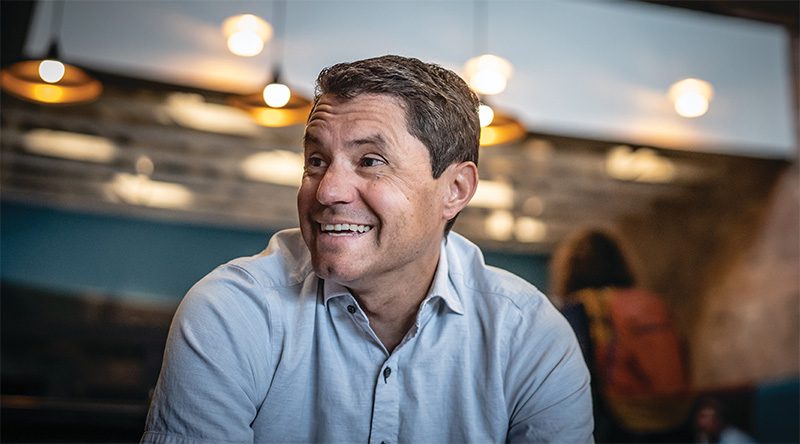
Campbell, who splits his time between Longmont, on the Colorado Front Range, and Gunnison, on Colorado’s Western Slope, has arrived in Albuquerque to look for an apartment for his eldest son, Ethan, who begins UNM as a transfer student this year. He drove down from Boulder County in his Porsche Taycan, a sleek rocket of an EV that can get to 60 in three and a half seconds. “Amazing,” is Campbell’s assessment of his electric ride.
Not yet 50 and with a startup cash-out behind him and another one in the high-stakes and lucrative race for the best EV battery technology, Campbell could be one of those arrogant Silicon Valley tech bros he likes to call an unprintable name.
Instead, he’s casual and funny, ready to tell an embarrassing story on himself (his personal website is www.entrepreneurialdysfunction.com and he describes himself as a battery nerd) and just as ready to admit to the luck that’s got him to where he is today.
“There’s always luck,” Campbell says. “But I also saw that we as a society are moving toward an electrified future.”
Campbell’s parents met at St. Pius High School in Albuquerque and Campbell was born in Mountain View, Calif., where his father was stationed in the Navy. His mother, Mary, was 18 when she gave birth and shortly after found herself divorced and back in Albuquerque.
Until she married Campbell’s stepdad when he was 10, “She was a single mom and basically said, ‘I gotta do something with my life,’” Campbell recalls. “And she went to UNM and got a degree in civil engineering. I grew up on campus. I would putz around and go to the
Duck Pond. She would take me to school and say, ‘I gotta go to class; entertain yourself.’”
His mother, who died in 2006, was one of the reasons Campbell chose to study engineering when he finally enrolled in UNM in his mid 20s.
His path to college was anything but traditional and that has a lot to do with hormones.
“Pre-puberty Doug was very active, very athletic,” Campbell says. “Post-puberty Doug was a shitshow. Always in trouble. Causing hell. Very anti-authority.”
Campbell barely got through Albuquerque High School and didn’t even consider going to college. Luckily, he found the sport of mountain biking and managed to get very good at it.
He turned pro in 1997 and spent the remainder of the decade racing all over the country on the national circuit. As he focused and matured, Campbell started taking some courses at what is now Central New Mexico Community College. His last full-time racing season was 1999, when Campbell, then 26, realized he needed a second act.
He enrolled at UNM as nearly a junior thanks to his CNM credits and chose engineering because he didn’t know what he wanted to do and it was the family business. Campbell raced through his undergraduate degree, finishing in 2001 just in time to realize that designing bridges and roads and sewage plants wasn’t his thing.
With May’s advice to keep searching for his niche in grad school, Campbell connected with Prof. Arup Maji, who was doing research on materials for spacecraft components and space structures and was associated with the Air Force Research Laboratory. Campbell found an area of engineering that excited him and he finished his master’s degree in a year, spending most of his time working in the Space Structures Group at the research lab.
“He was always a top student,” says Maji, who funded Campbell’s master’s work and chaired his thesis committee.” When Campbell graduated, May wrote some letters of recommendation.
“This young man is destined for something exceptional,” he wrote. “Whatever he is going to set out to do he will accomplish.”
Campbell, with his wife, nurse Arishanda Campbell (‘00 BSN), left for the mountains of Colorado and worked in design and program development for a company that creates composite materials for harsh environments and another R&D company that had battery technology in its portfolio.
Frustrated with management, Campbell broke out on his own in 2012 and co-founded ROCCOR, a space deployables and small satellite component products company that started as the prototypical two guys in a garage and after some lean years grew to employ dozens and develop technology to remove some of the millions of pieces of debris in space.
Simultaneously, Campbell co-founded Solid Power in 2012, as a spinoff from the University of Colorado Boulder. In just 10 years, Solid Power has designed and is producing a different kind of battery for the electric vehicle market.
Since he stepped down as CEO at ROCCOR in 2018 and sold the company in 2020, Solid Power is his only focus and the company is closing in on mass-market production of its battery cell.
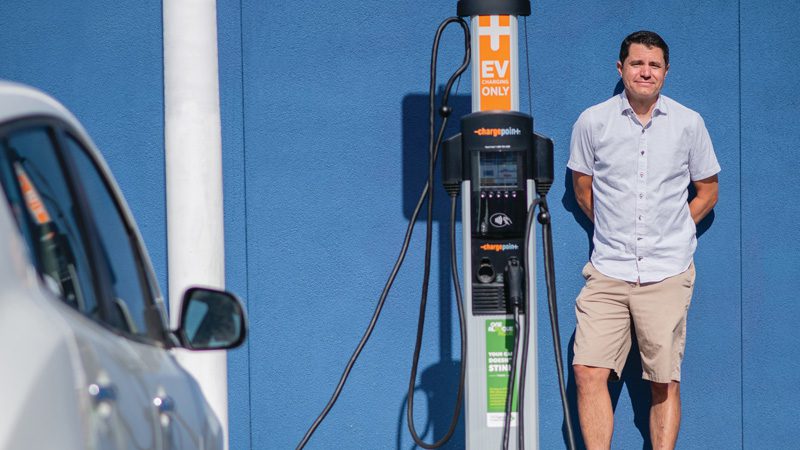

Thin layers of a sulfide-based electrolyte bound for battery cells on the production line at Solid Power.
Ask Campbell to explain his product and the engineer in him takes pen to paper and draws it out.
Chargeable lithium-ion batteries store energy by drawing ions from the cathode (plus) side to the anode (negative) side through a porous separator encased in a liquid electrolyte. They produce power by reversing that process and releasing electrons. That system has four components: the cathode and anode, electrolyte liquid and a polymer separator.
It is the kind of battery that currently powers the EVs on the road today.
An all-solid-state battery uses the same cathode/anode system but replaces the electrolyte liquid and polymer separator with a single component called an electrolyte separator.
“It is a discreet solid layer,” Campbell says, “so think Oreo cookie: creamy filling and your two little sandwiches.”
By replacing the two components with one solid state package that is more energy-dense, the vehicle’s range can increase by 30 to 50 percent, Campbell says. And because an all-solid-state battery is stable across a wide temperature range, auto manufacturers may be able to eliminate the costly cooling technology they build into electric vehicles.
“At the end of the day this works to deliver higher range and lower cost. That’s why Ford and BMW are working with us,” he says.
The proprietary component that Solid Power is delivering to Ford and BMW is the electrolyte separator.
“Broadly it’s a sulfide-based electrolyte,” Campbell says. Solid Power synthesizes the electrolyte as a powder, then turns it into a slurry (think cake batter), which is pumped into a machine similar to a printing press that pumps out thin layers that are stacked into a cell about the size of an iPad; a process very similar to how today’s lithium-ion batteries are produced.
The company is in pilot production, making hundreds per week.
Solid Power provides only the cells to the automakers, who design the battery packs. Campbell estimates his cells will be in EV models as soon as 2027.
His path from mountain biker to successful entrepreneur with millions to donate to his alma mater can look like a head scratcher. But Campbell sees it all as a perfect arc.
“I have over-the-top ambition. It’s how I’m wired. I’m always go, go, go, go, go. I’m just driven,” Campbell says. “And I’d argue that cycling primed me for business.”
Training all the time, watching your eating, weight and sleep and knowing that not winning a race isn’t failure are fundamentals for an endurance athlete.
“You can’t worry about yesterday’s results, you’ve just got to just train, train, train,” Campbell says. “And that’s the same thing in business. You have to be persistent. You have to ride the highs and the lows. You can’t get too excited in the highs and you can’t get too bummed out in the lows. Otherwise, you’ll drive yourself crazy and you’ll flame out.”
Maji, the engineering professor who funded Campbell’s graduate work, is surprised by the speed and level of Campbell’s success, but not that he’s made it big.
“I’m not surprised in the context of his personality and caliber and zeal to do something different,” Maji says. “He was always a top student. And looking back, I can see why, given the traits that he had, he could certainly blossom into a very successful entrepreneur.”

When Campbell made the gift and specified the department be named for May, Campbell wanted to honor a man who helped change his life.
“I’m greatly honored,” says May, who retired from UNM in 2002 and is 81. “I see a young man who has accomplished extraordinary success at a young age. Quite exceptional. And I think it’s exceptional at this young age that he’s looking to benefit his school.”
Campbell readily admits he is not Jeff Bezos or Bill Gates or Elon Musk. “Five million sounds like a lot, but at the end of the day it’s not,” he says.
So he wanted his gift to be targeted to a small corner of the world that means something to him.
“It’s always been Albuquerque,” Campbell says. “Because even though I don’t live here I’ve always had a passion for this place. Because there’s goodness here. New Mexicans are good people. They’re very down-to-earth people. And UNM is competing with phenomenal research institutions, and I do think it punches above its weight, but it’s located in a relatively small state. I want to make my little corner of the world — the civil engineering department — more competitive.”
Campbell hopes his gift, which will endow a fund to be used at the discretion of the the Civil Engineering Department chair, will help to sweeten the pot to attract and retain world-class faculty.
Part of the plan is to help UNM compete with larger, better-funded universities in the competitive world of startups and spinoffs, a passion close to Campbell’s heart.
“I’m an Albuquerque kid who’s now running a company that the business community pits against spinoffs from Stanford and MIT,” Campbell says. “I’m not intimidated by anybody who comes out of these blue-chip universities.”
UNM grad helps spark electric vehicle revolution…
Read MoreOpera singer pivots to performance coaching…
Read MoreAlumnus caps computing career with prestigious prize…
Read MoreAlumna heads up museum devoted to the American Indian experience…
Read MoreAlumni board president keeps UNM ties tight…
Read MoreAlumni take home a Grammy and a Pulitzer for music…
Read More
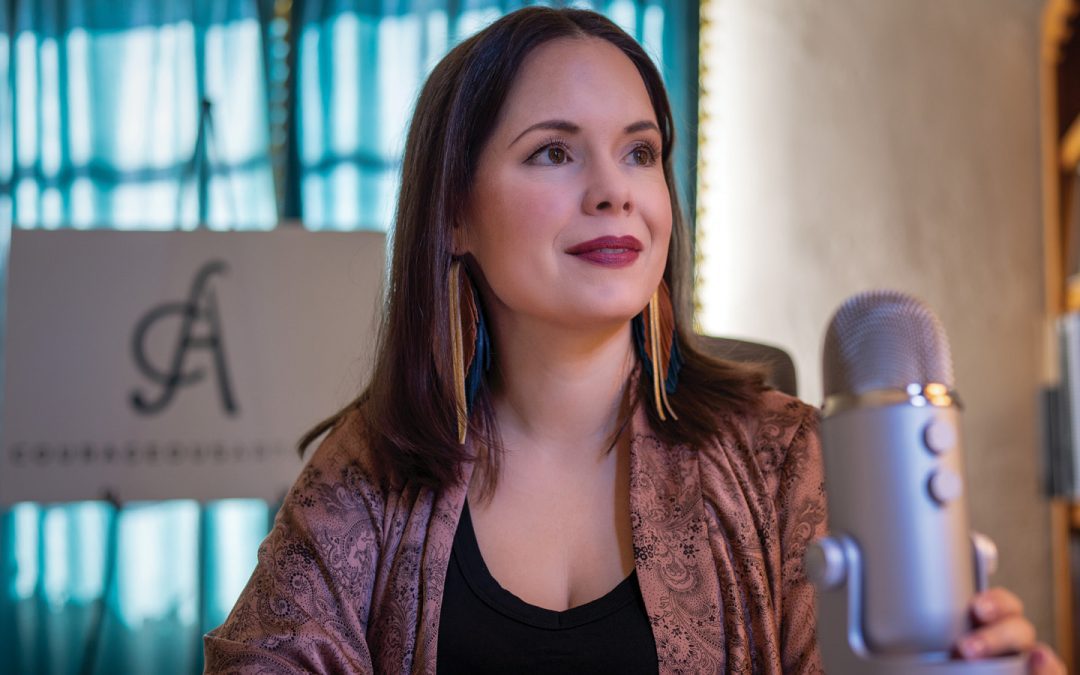
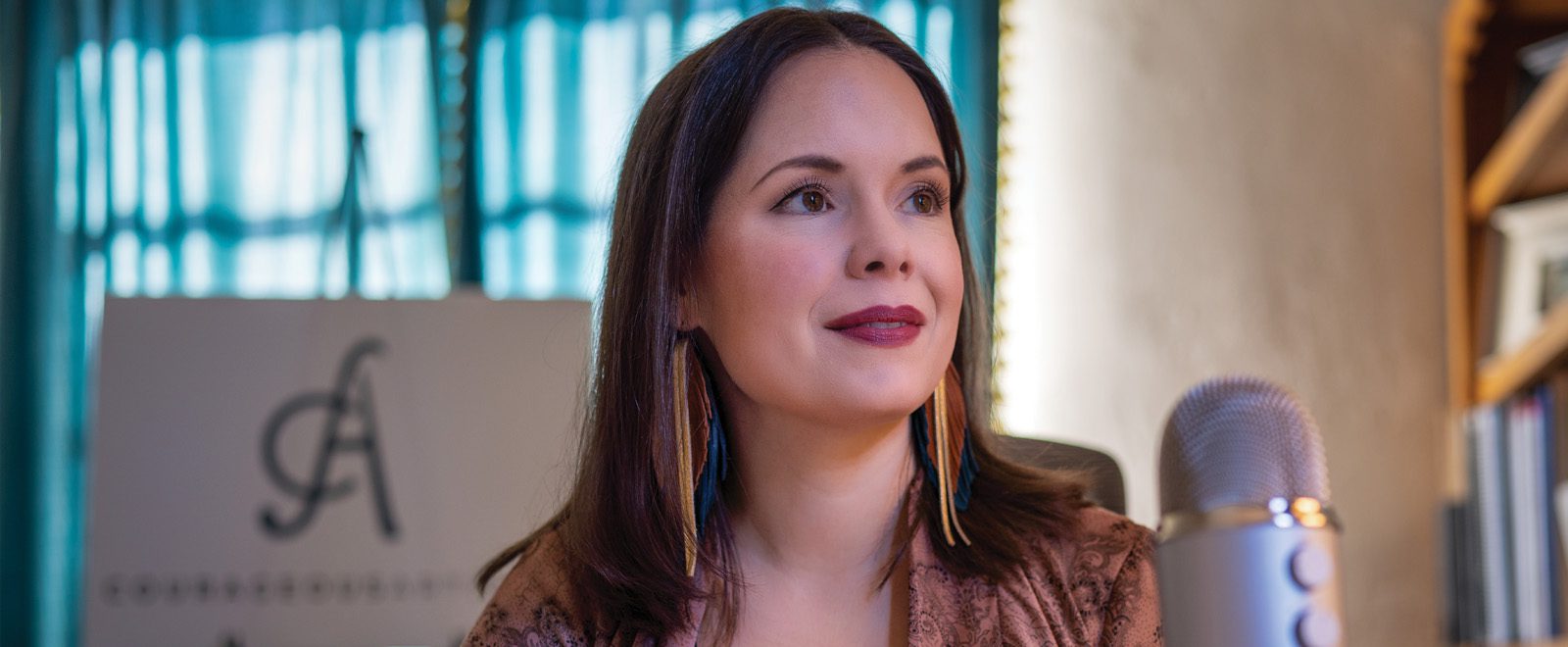
Photos:
Roberto E. Rosales (’96 BFA, ’14 MA)
Opera singer pivots to performance coaching
By Amanda Gardner
Performing on some of the biggest stages in Europe and the United States, soprano Ingela Onstad has felt the highs and lows of being a performer.
The highs: Singing at the Santa Fe Opera and Dresden’s Staatsoperett and mastering a piece for Mahler’s Fourth Symphony in just one night so she could fill in for a sick cast member. The lows: Shaking hands, knees and voice and forgotten lyrics.
Now Onstad (’14 MM, ’17 MA) takes her training and experience to a new venue, an Albuquerque-based coaching business called Courageous Artistry, which helps others overcome stage fright, build confidence and achieve career goals.
When Onstad first hung out her shingle (a largely virtual shingle thanks to the pandemic), she catered primarily to other singers and performers, but has now expanded her clientele to include instrumentalists and even professional football referees.
“I can help all humans with these skills. It’s pertinent to people’s lives,” says Onstad, who holds master’s degrees in both voice performance and mental health counseling from UNM and counts some 15 to 25 coaching clients, most of them in North America (including Canada) and Europe.
Most of the issues come down to the basic human emotion of fear.
“Fear is deeply woven into our biology,” Onstad explains. “Fear of judgment, fear of criticism.”
Coaching usually starts with cognitive work on how the brain works, the biological fundamentals of fear. “Our natural factory setting is a lot of negative thoughts,” she says. “We assess whether that is helpful or harmful.”
Once her clients understand this basis of fear she then helps them outline their goals, and then moves forward using various cognitive and emotional tools.
Nikki Kelder, an actress and singer in New York City, came to Onstad in November 2020 for help dealing with “extreme anxiety” in auditions and self-sabotaging. Through visualization, breathing techniques, goal setting, books, worksheets, podcasts and more, Kelder has learned to identify how she undercuts herself so she can show up better in auditions. “I began to feel more hopeful and positive about the audition process,” she says.
Onstad herself has been auditioning since she was a preteen in Santa Fe. Because few young people were studying voice in Santa Fe at the time, she stood out, something which helped build her confidence from the beginning. “I was a big fish,” she remembers. “I was one of the best ones around.”
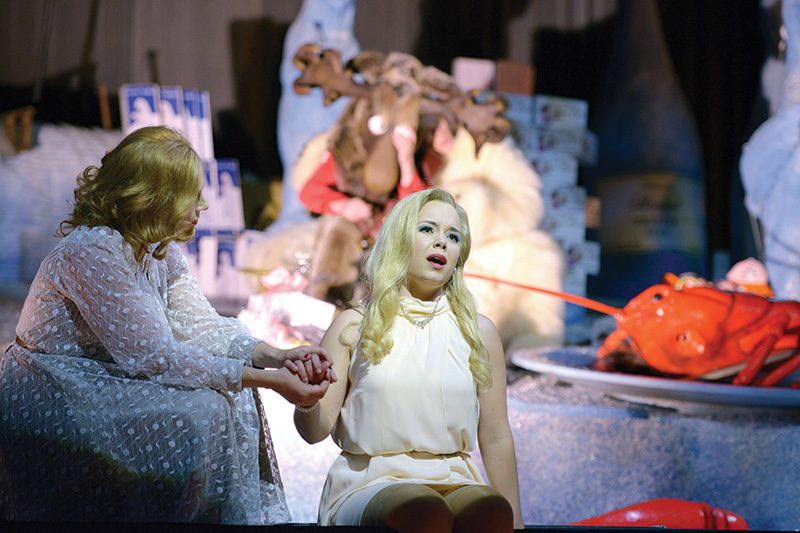
She continued to perform in junior high and high school, started singing professionally when she was 18 and then moved on to ever bigger ponds. She was accepted into the renowned voice program at McGill University in Montreal where she was among many fellow students who went on to build international reputations. She recalls her “jaw hitting the floor” when she listened to master’s and doctoral students sing during weekly studio sessions.
From there, Onstad moved to even bigger stages, this time in Germany. Had she stayed in the U.S., she likely would have had to operate as a freelancer (much like Kelder). In Europe, vocal artists are hired by certain opera houses, with contracts lasting a number of years. Over the span of about a decade, Onstad worked at opera houses in three different cities.
In Europe, she performed opera at Dresden’s Staatsoperette, Oldenburgisches Staatstheater and Landestheater Schleswig-Holstein. In the U.S., she has sung at the Santa Fe Opera and has had concert performances with the Santa Fe Symphony, New Mexico Philharmonic, Chatter, Bad Reichenhaller Philharmonie, Chicago Arts Orchestra and many others.
Because she is a lyric soprano, Onstad often sang (and still sometimes sings) the lighter roles in operas. Think more Mozart and Puccini, less Wagner. She has played Musetta in one of her favorite operas, Puccini’s La Boheme, a character who, ironically enough given Onstad’s future career, touts her own virtues in Act II.
“There are different weights of voices. It has to do with the thickness of the vocal cords and certain body types are better for certain things,” she explains. “I’m petite, and smaller frames generally house smaller instruments and sing lighter roles.” (As a point of contrast, Onstad is married to Michael Hix whose very tall frame houses a very big baritone. He is currently interim chair of the UNM Department of Music.)
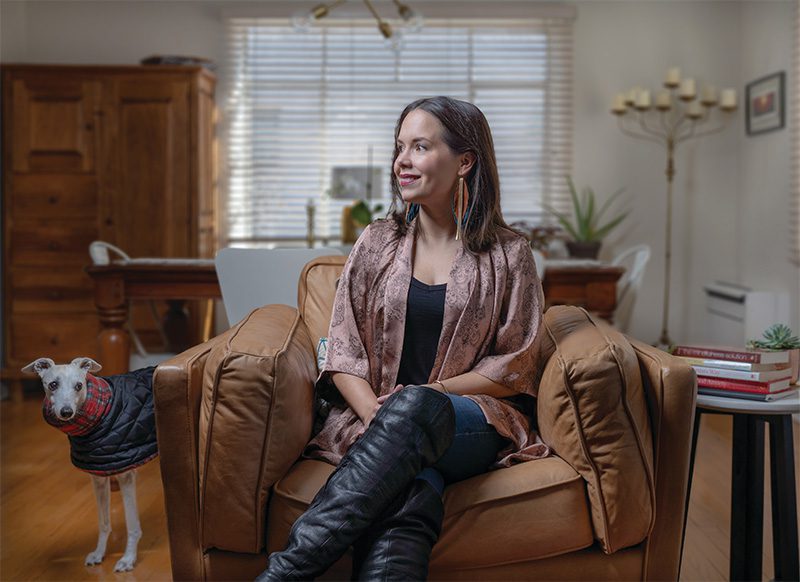

Onstad returned home to New Mexico in 2012, earned her first master’s, in voice performance, in 2014 and her second, in counseling, in 2017. She then worked at a local counseling agency and as a voice coach while continuing to perform locally. As she grew in her multiple professional roles, she began to see “a real need for specialized psychological help for performing artists,” she says. “Athletes have it in the form of sports psychologists. I think of myself as a type of athlete.
Onstad’s own performance issues had less to do with classic stage fright than with holding herself back for fear of not being good enough or ready enough, which itself often stems from perfectionism. “A lot of times it’s not necessarily the classic stage fright,” she says. “Oftentimes I see a colleague have a certain type of confidence in rehearsal. They shrink when it comes to the performance.”
She saw it all around her. When people realized she was in the mental health field, she started getting late-night calls and texts from panicked colleagues and friends: I am so anxious. I have a performance tomorrow. Can you give me tips?
This reaching out required its own well of courage. “It’s really taboo to talk about anxiety in the community. We don’t speak about it openly because the competition is so high and there’s stigma around any type of mental health issue. Even admitting to a fellow colleague that having a lot of anxiety creates more anxiety,” she says. “You’re already at maximum vulnerability.”
That makes Courageous Artistry particularly valuable as a private space where the people behind the public personas can go ahead and be afraid, then work through it.
Onstad says she chose coaching rather than therapy because coaching allowed her to have clients all over the world. If she had offered therapy, she would have been limited to New Mexico clients unless she acquired multiple licenses.
Certainly, Onstad’s therapy background informs her practice but coaching, including her style of coaching, is very present and future-oriented, whereas therapy is heavily based in a past perspective.
Coaching, she notes, is not “Why do I feel the way I feel?” but more “How can I progress towards my goals?”
One of Kelder’s favorite exercises, one that has led to “lasting and significant change,” involved visualizing her life as a working actor: What would her day look like? What tasks would she accomplish? What job would she have?
Onstad launched Courageous Artistry just as the shadow of COVID-19 darkened the world. “I thought this is either terrible or wonderful timing,” she laughs. Onstad made sure it was wonderful, offering free webinars to help artists cope with the stress of diminished work opportunities and canceled performances. She now sees clients in person and on Zoom.
Meanwhile Onstad was experiencing her own learning curve as an entrepreneur and, taking her own advice, hired a business coach to lead her through this new world.
In addition to the free webinars, she drums up business through presentations at colleges and organizations, including Tulane University, UNM and Youth Opera of El Paso. She also gets referrals from voice coaches (that’s how Kelder found her), physical therapists and speech language pathologists, including, recently, a team at Duke University.
Onstad’s extensive career as a performer prepared her well for this new role. “I’m used to being in the public eye and presenting myself,” she says. “I’m used to poor odds, knowing the chance you take auditioning. You have to be brave. You have to be courageous and resilient. You have to learn.”
Recent Comments